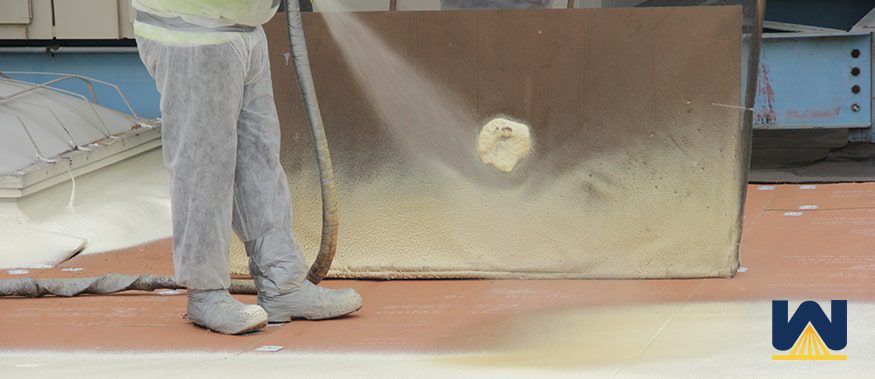You may have heard from a friend, an article, or a colleague that you should look into a spray polyurethane foam roof.
You may have heard that it’s seamless, has great R-value, and in most cases, it won’t require complete removal of the current roof, which is great for landfills and the environment.
But, you might be thinking, “Can spray foam be installed over MY roof”?
At West Roofing Systems, we’ve been installing spray foam roofs over many types of commercial roofs over the past 40+ years. Gravel built-ups, single-ply’s, metal, etc.
But can all these roofing systems get spray foam installed over them?
Today we’ll go through the most popular roofing systems to see if foam can be installed over them, and if it can, we’ll talk briefly about the preparation needed to begin the installation.
Let’s go…
Can spray foam be installed over an existing roof?
Spray polyurethane foam roofing contractors, 99.9% of the time, install the foam system over an existing roof.
If the spray foam system is so good, why isn’t this the initial roof that’s installed over a building?
Good question.
The public is just not educated in non-traditional roofing systems, but we’re getting there (that’s why you’re here…right?).
But how it starts is that a traditional roof will have leaks, and the building owner or maintenance manager looks up replacement/repairs and eventually learns that spray foam roofing can be installed without completely removing the existing roof.
It’s a benefit for the building owner (less tear off = less expensive) and they get a new roof that will reduce their energy expense.
What types of existing roofs can spray foam be installed over?
Let’s go one by one into each traditional roofing system and explain if spray foam can be installed.
Metal
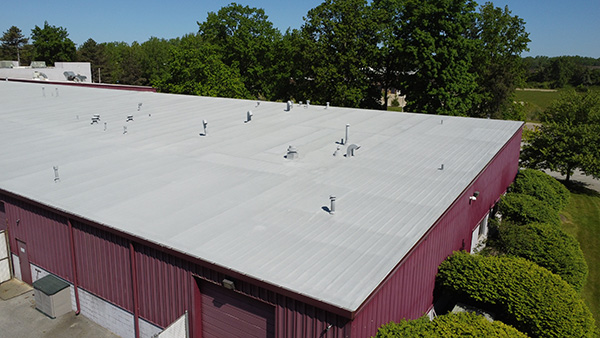
Spray foam can be installed over a commercial metal roof. How the installation begins is to first clean the existing roof with a power washer to remove debris and dirt.
With most metal roofs having rust, a roofing contractor will use a rust inhibitor primer, which will stop the oxidation process in rusting metals that have been exposed to oxygen and water.
If this step is skipped, rust will continue to grow on your metal roof, which will accelerate the rate of decline in your roof’s projected lifetime.
Once the primer is installed, foam can begin to be installed.
NOTE: with metal roofs having crimped panels, tiny holes can be created throughout the years with the roof expanding and contracting due to weather fluctuations. With spray foam being liquid applied that expands, the foam will fill these areas, stopping water from entering your building.
TPO
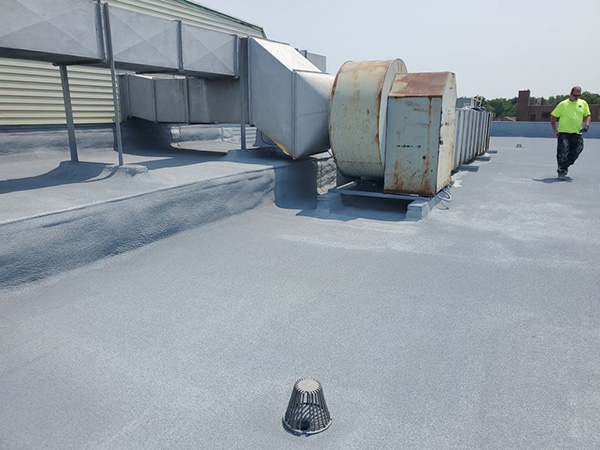
Spray foam cannot be installed over an existing TPO roof…without a cover board.
Since TPO is heat-welded at the seams, the roof is not completely adhered to the insulation below.
Spray foam can only be applied to a fully-adhered substrate, so adding a cover board over the TPO roof makes that true.
The first step is to identify any indications of saturation underneath the existing TPO roof. These are done by pulling core samples and by doing an infrared inspection.
Once those areas are removed and replaced with similar materials that the roof currently has, the cover board can be installed, and then the spray foam installation can begin.
NOTE: a great benefit of installing spray foam over TPO is that you won’t have to worry about seams in the future. Seams break apart over the years due to harsh weather and wind, and once they do, water has a clear path into your insulation. With spray foam being monolithic and one continuous layer, seams will be eliminated from your current TPO roof.
EPDM
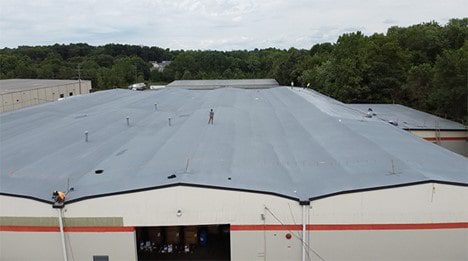
Yes, spray foam can be applied over an existing EPDM roof. However, EPDM roofs have three different types of attachments, which affect the spray foam installation.
Type 1 is a fully adhered EPDM roof. This means the EPDM has been applied over the insulation with an adhesive. Since the roof is fully adhered, foam can be applied. A primer/cleaner may be used depending on the condition of the existing roof.
Type 2 is a mechanically-attached EPDM roof. Mechanically-attached means there are rows of plates and screws at the seams of the membrane that fasten the roof down. Since this type of EPDM roof is not fully adhered, a cover board needs to be installed first, then the spray foam.
Type 3 is a ballasted EPDM roof. Ballasted means that the EPDM is only fastened down at walls and curbs. Then, a thick layer (minimum 10 lbs./sq. ft.) of rocks and stones are laid over top.
For a spray foam roof installation, the rocks need to be removed using an industrial vacuum system. Then a cover board needs to be installed over the EPDM. Then the foam installation can begin.
NOTE: As mentioned before, spray foam roofs are seamless. Besides where the rubber sheets are fastened together, another area that commonly lets water in is around penetrations. With an EPDM roof, the rubber needs to be custom-cut to fit around the boot that’s installed. You can see there are many overlapping areas, which have gaps. These gaps are filled when installing foam, which fully encapsulates the entire area around a penetration.
Spray polyurethane foam
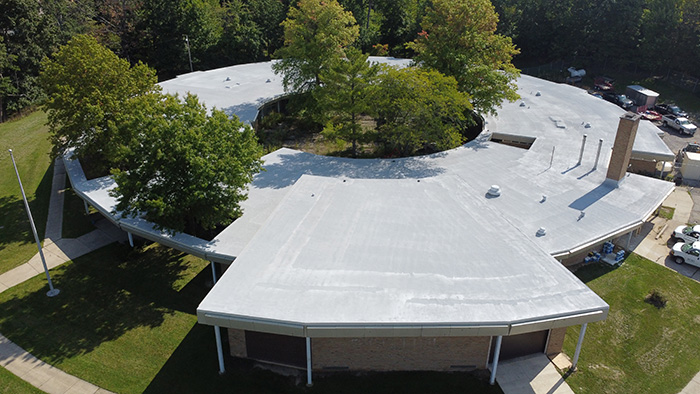
Yes, you can install spray foam over an existing spray foam roof. This is what’s called a recoat. A recoat is needed every 10-20 years, depending on the amount of coating that was initially installed.
Over the years, the initial 20-30 mils of coating that protects the foam roof from degrading UV rays, is worn down naturally to around 7-10 mils of coating.
A spray foam roofing contractor will power wash the coating, washing away all the loose granules, and then re-install the coating back to the original 20-30 mils…with new granules broadcasted into the 2nd layer of coating.
There are many issues with broadcasting granules into a single coat of coating over a spray foam roof.
NOTE: The recoat process is why the spray foam roofing system is renewable and can last indefinitely. Some roofs that West Roofing Systems installed in the 1980s are currently on their 2nd and 3rd recoats.
Built-up
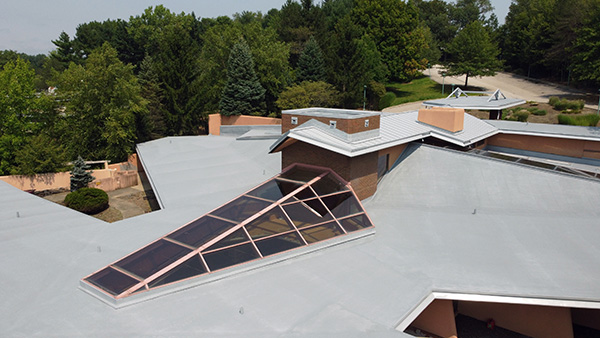
A spray foam roof can be installed on a smooth or gravel-surfaced built-up roof since the roof fully adheres to the underlying substrate.
For spray foam to be installed over a gravel built-up roof, a wet-vac process must remove the stones and gravel so there’s a clean surface left behind.
In both instances, the roof will need to be power washed clean before spray foam can be installed.
NOTE: if you have a gravel built-up roof and you have a roofing leak, it’s difficult to determine where on that roof the problem is.
Modified bitumen
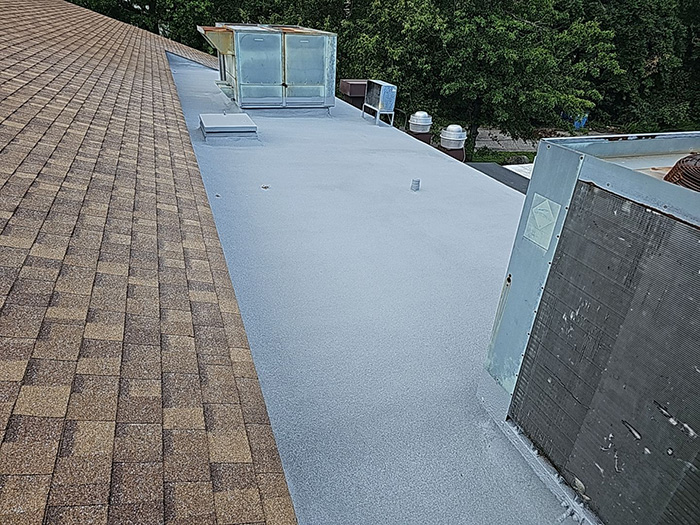
A spray foam roof can be installed over an existing modified bitumen roof. Since “mod-bit” comes in a roll, whether torched or adhered down, it’s a fully-adhered system where a cover board isn’t needed.
If it’s a granulated mod-bit, those granules are fused into the top layer, which is still fully adhered.
NOTE: since modified bitumen roofs come on a roll, they have the same issues with not fully encapsulating penetrations as single-ply and built-up roofs do. Un-encapsulated penetrations allow water to come in and HVAC energy to escape.
The 3 most important facts about spray foam over existing roofs
Since you now know that spray foam can be installed over any existing roofing system, the three most important facts to the takeaway are:
- The existing substrate needs to be fully adhered to the insulation or deck, or a cover board must be installed so the foam can be applied to a fully-adhered layer.
- The existing roof and underlying insulation need to be dry. Core samples and an infrared inspection will identify those areas.
- The existing substrate (if not using a cover board) needs to be clean and dry. This is usually done with power washing. But when we say clean, we mean as clean as if you dropped your sandwich and you wouldn’t think twice about picking it back up to eat. This is very important for the spray foam to adhere and cure how it was meant to.
What are your next steps?
Learn the basics of spray foam roofing. The guide below answers questions, such as:
- How much does it cost per square feet?
- What common problems does the system have?
- And what are the pros/cons of them versus other roofing systems?

